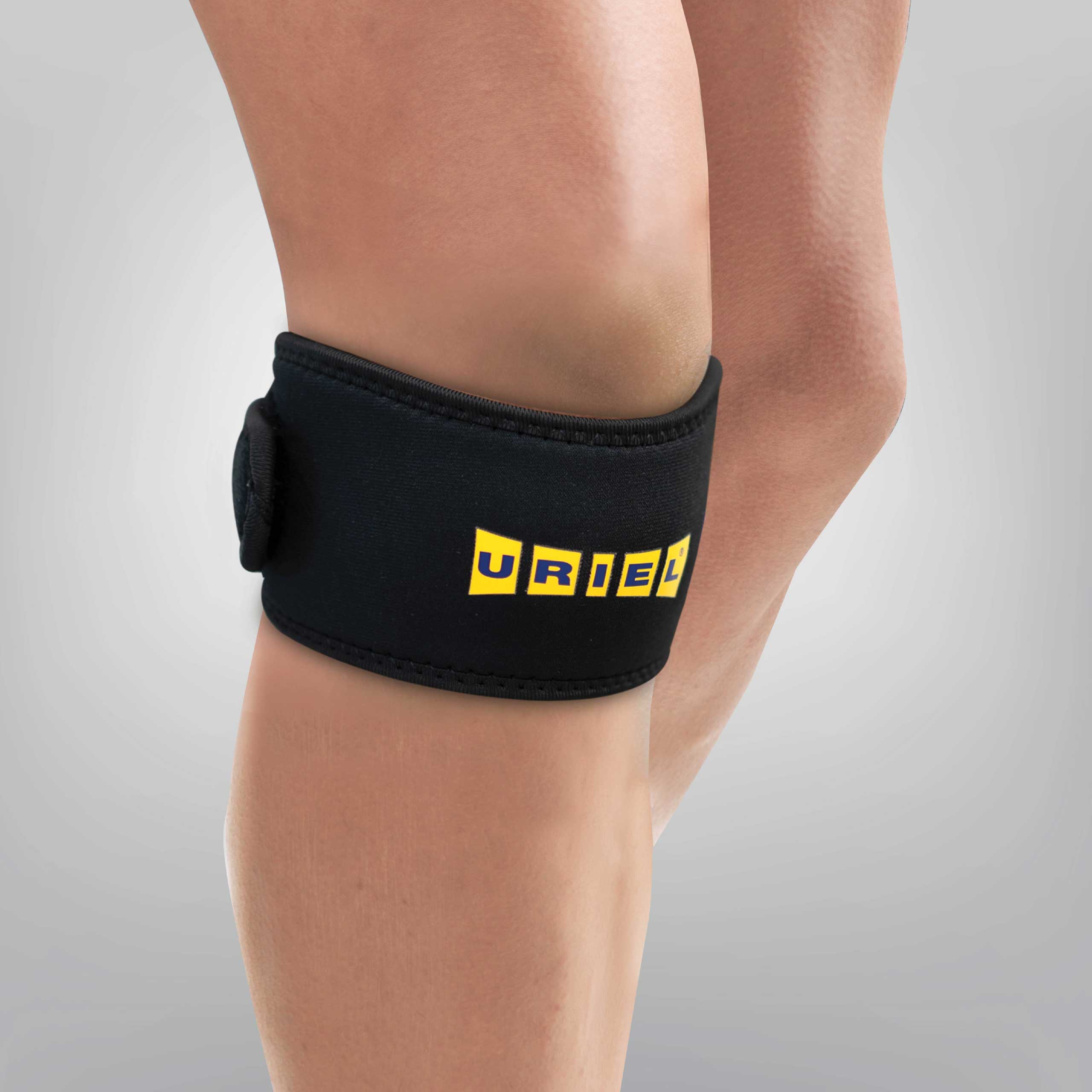
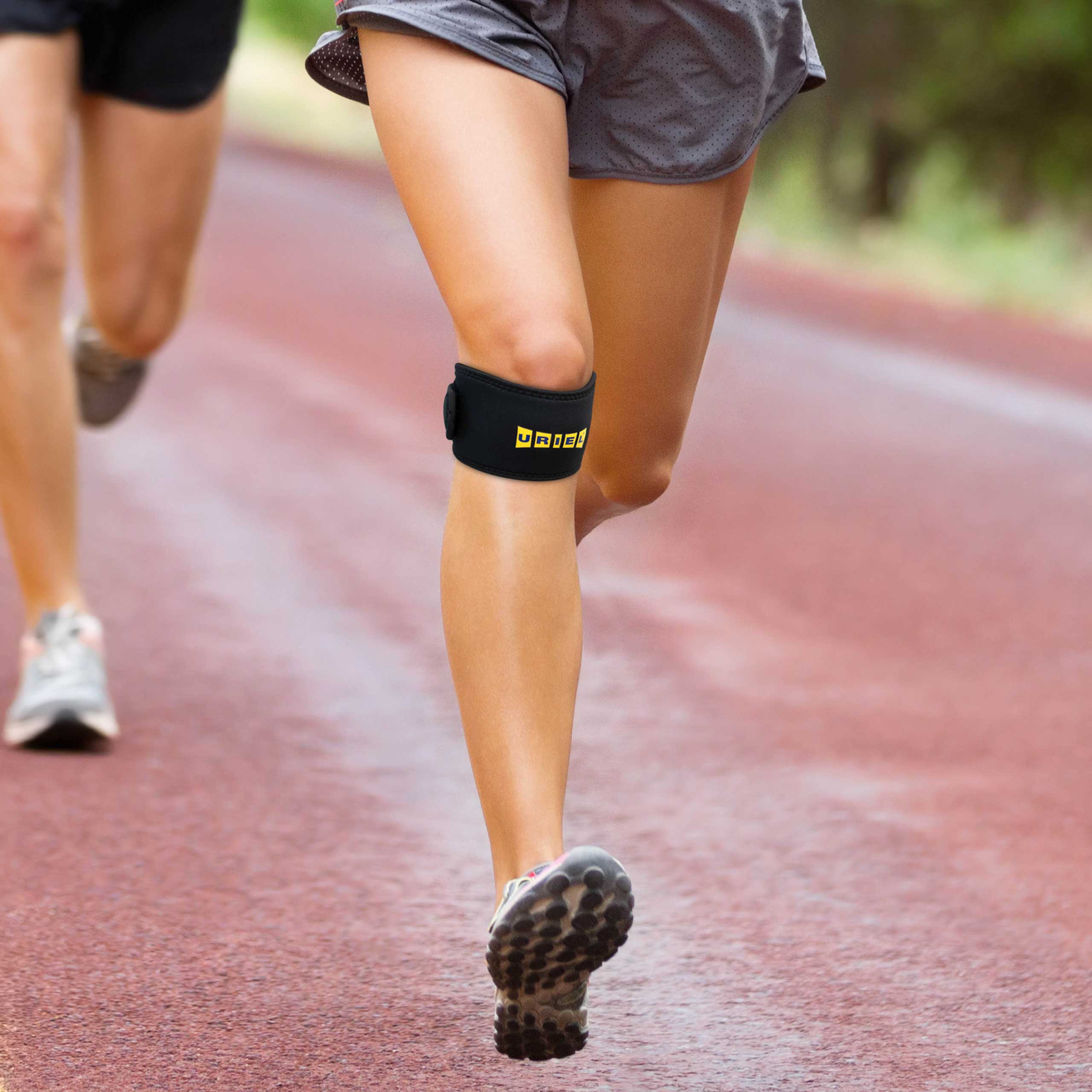
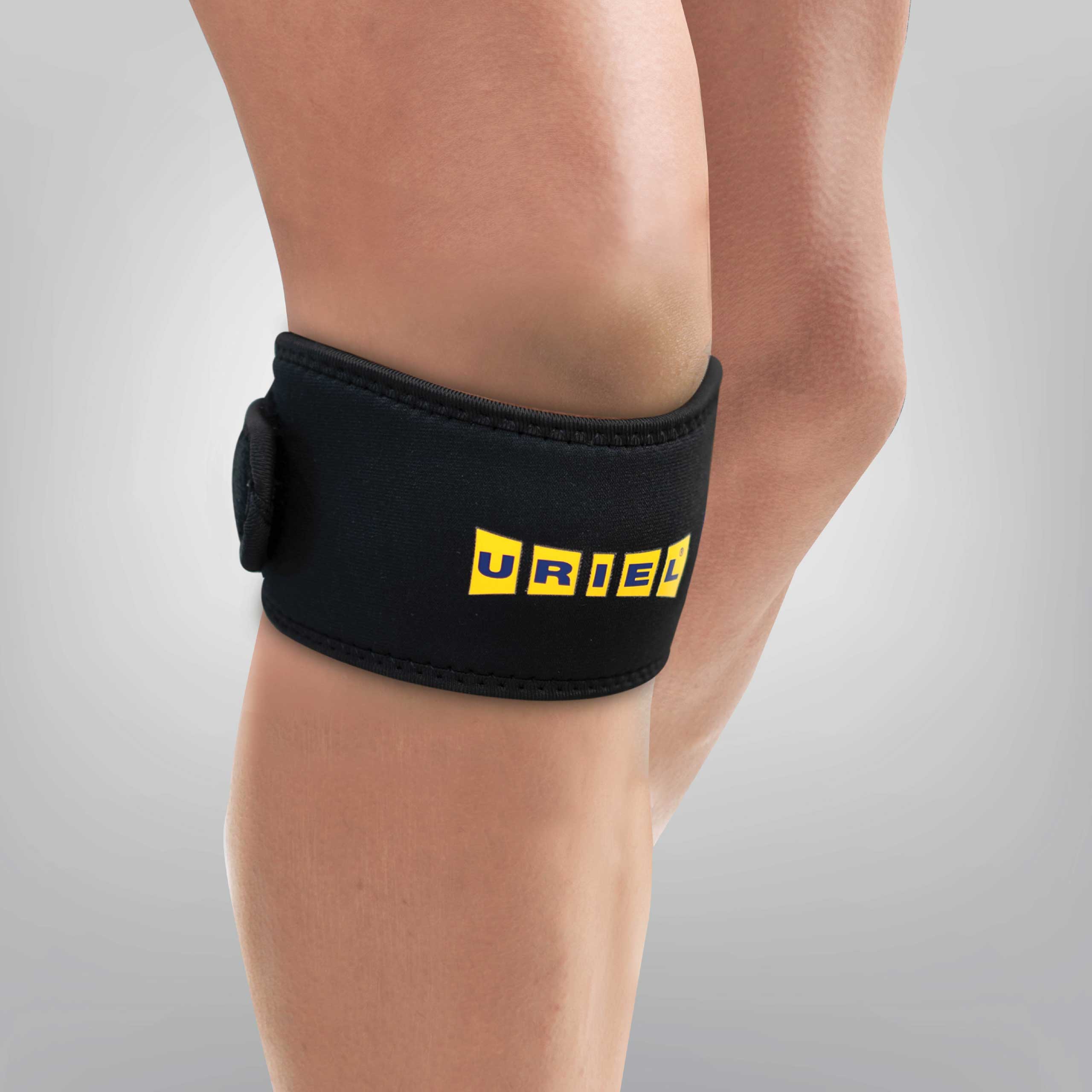
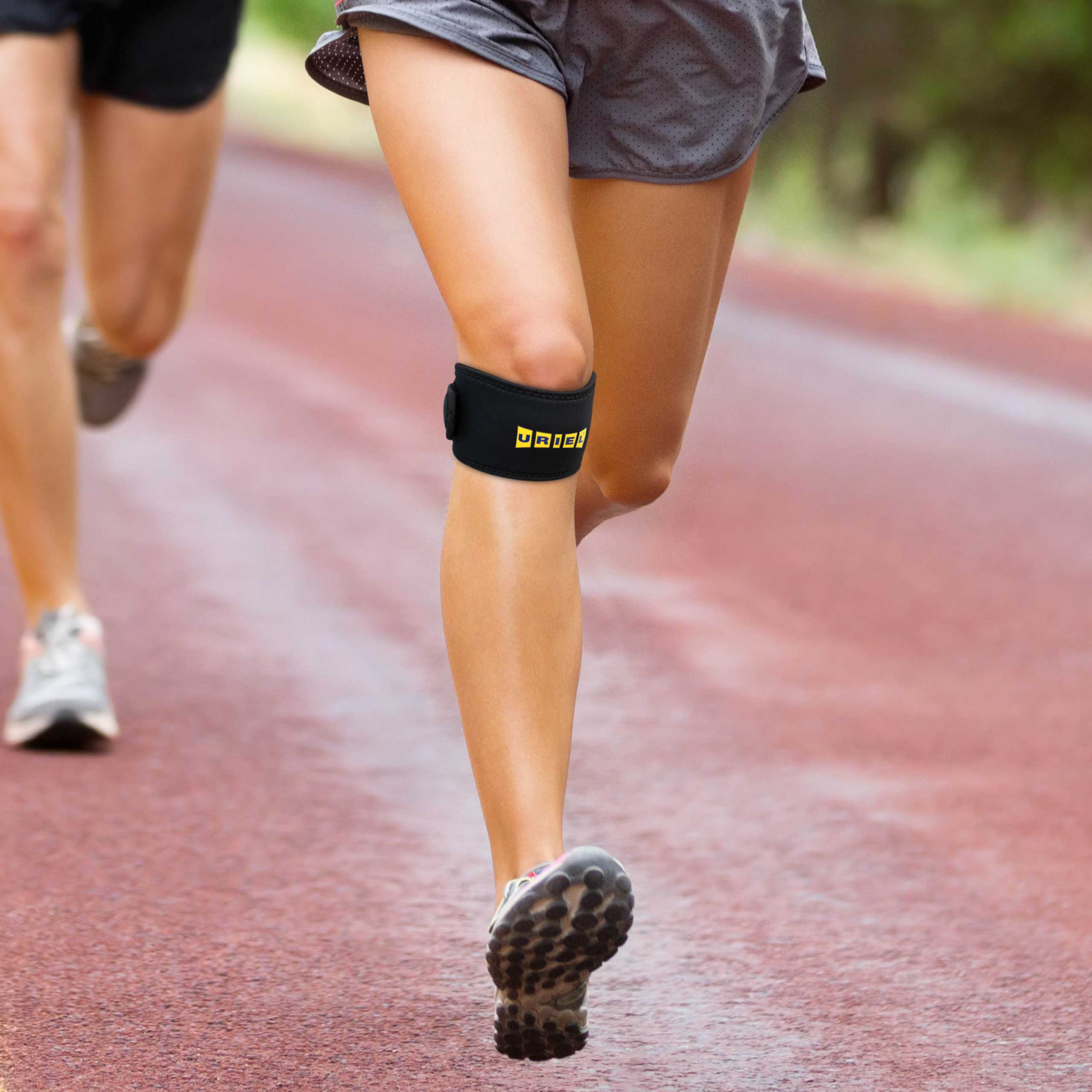
Patellar Bandage | T40B
A strap for treating patellar tendon pain combined with a silicone pad
A patellar bandage designed to treat patellar tendon pain as part of conservative treatment by applying pressure to the tendon below the kneecap.
At the front of the ligament, a silicone pad is located above the patellar tendon. The pad has spherical protrusions that, together with movement, cause a localized massage and help with blood flow in the ligament.
The back closure strap has padding that protects the blood vessels that run through the back of the knee.
Medical indications:
- Osgood-Schlatter
- Jumper's knee
- Runner's knee
- Patellar tendinopathy
- Anterior knee pain
- Chondromalacia patella
- Patellar tendinitis
- Anterior Knee Pain

Dimensions
ONE SIZE

Extended description
Pain reduction:
The patellar tendon is the continuation of the quadriceps muscle, and it connects the patellar bone to the shin bone. This product works by changing the angle of application of the tendon, which helps reduce the load on the tendon and reduce the inflammatory process.
In addition, the pressure of the ligament on the patellar tendon improves sensorimotor feedback in the knee joint, improves proprioceptive input (a deep sense that allows us to know the position of the knee at any moment), increases self-confidence in movement, and reduces pain.
Planning and design:
The product is made of neoprene wrapped in a towel on the inside. The neoprene retains heat in the patellar tendon, which increases blood flow in the area and promotes the healing process. The upper part of the strap has an anatomical recess designed to allow free movement of the patellar bone during movement. The silicone pad at the front of the strap is located above the patellar tendon. The pad has spherical protrusions that, together with movement, cause a spot massage and help with blood flow in the strap.
Material composition: 32% neoprene, 18% cotton, 16% polyamide, 7% polyester.
Rehabilitation and recovery:
Patellar tendon injuries improve with a combination of reducing the type of load that caused the injury and increasing the load of other, adapted physical activity. Using a strap may allow you to perform physical activity without pain.
Injury prevention:
Athletes who are prone to developing patellar tendonitis or pain in this area should use this product during busy periods, before the pain recurs. In these individuals, early use may prevent the onset of pain.
User manual
- The silicone pad should be placed just below the patellar bone, and the strap should be tightened so that pressure is felt on the patellar tendon, but not so much pressure that it stops blood flow.
- After putting it on, move the knee through its full range and make sure the strap does not slip down.
- The patella strap can be used during activity or throughout the day, as needed or according to the therapist's instructions.
- It is recommended to clean the product occasionally depending on the degree of use according to the instructions on the packaging.
Our expert advice
- You should choose the product that is most suitable for you, depending on your condition. It is recommended to consult with your healthcare provider.
- The duration of use should be increased gradually and according to the level of pain.
- It is recommended to use the product only during activities that cause pain.
- It is recommended to use the product in conjunction with physical therapy treatments that include strengthening, stretching, stability exercises, and more, according to the physical therapist's diagnosis.
- Patellar tendon pain may last a long time, so be patient. You can do physical activity that does not cause pain, including aerobic activity without jumping, such as cycling or cross-training.
- Before exercising, it is important to perform a gradual, pain-free warm-up. After the activity, perform stretches, especially for the quadriceps muscle.
- Be sure to drink plenty of water, get a good night's sleep, and minimize your sugar intake. Sticking to these three will help you recover faster.
- If there is no improvement in the condition, you should consult a doctor or physiotherapist regarding additional treatment options.
ONE SIZE

Pain reduction:
The patellar tendon is the continuation of the quadriceps muscle, and it connects the patellar bone to the shin bone. This product works by changing the angle of application of the tendon, which helps reduce the load on the tendon and reduce the inflammatory process.
In addition, the pressure of the ligament on the patellar tendon improves sensorimotor feedback in the knee joint, improves proprioceptive input (a deep sense that allows us to know the position of the knee at any moment), increases self-confidence in movement, and reduces pain.
Planning and design:
The product is made of neoprene wrapped in a towel on the inside. The neoprene retains heat in the patellar tendon, which increases blood flow in the area and promotes the healing process. The upper part of the strap has an anatomical recess designed to allow free movement of the patellar bone during movement. The silicone pad at the front of the strap is located above the patellar tendon. The pad has spherical protrusions that, together with movement, cause a spot massage and help with blood flow in the strap.
Material composition: 32% neoprene, 18% cotton, 16% polyamide, 7% polyester.
Rehabilitation and recovery:
Patellar tendon injuries improve with a combination of reducing the type of load that caused the injury and increasing the load of other, adapted physical activity. Using a strap may allow you to perform physical activity without pain.
Injury prevention:
Athletes who are prone to developing patellar tendonitis or pain in this area should use this product during busy periods, before the pain recurs. In these individuals, early use may prevent the onset of pain.
- The silicone pad should be placed just below the patellar bone, and the strap should be tightened so that pressure is felt on the patellar tendon, but not so much pressure that it stops blood flow.
- After putting it on, move the knee through its full range and make sure the strap does not slip down.
- The patella strap can be used during activity or throughout the day, as needed or according to the therapist's instructions.
- It is recommended to clean the product occasionally depending on the degree of use according to the instructions on the packaging.
- You should choose the product that is most suitable for you, depending on your condition. It is recommended to consult with your healthcare provider.
- The duration of use should be increased gradually and according to the level of pain.
- It is recommended to use the product only during activities that cause pain.
- It is recommended to use the product in conjunction with physical therapy treatments that include strengthening, stretching, stability exercises, and more, according to the physical therapist's diagnosis.
- Patellar tendon pain may last a long time, so be patient. You can do physical activity that does not cause pain, including aerobic activity without jumping, such as cycling or cross-training.
- Before exercising, it is important to perform a gradual, pain-free warm-up. After the activity, perform stretches, especially for the quadriceps muscle.
- Be sure to drink plenty of water, get a good night's sleep, and minimize your sugar intake. Sticking to these three will help you recover faster.
- If there is no improvement in the condition, you should consult a doctor or physiotherapist regarding additional treatment options.
Blog
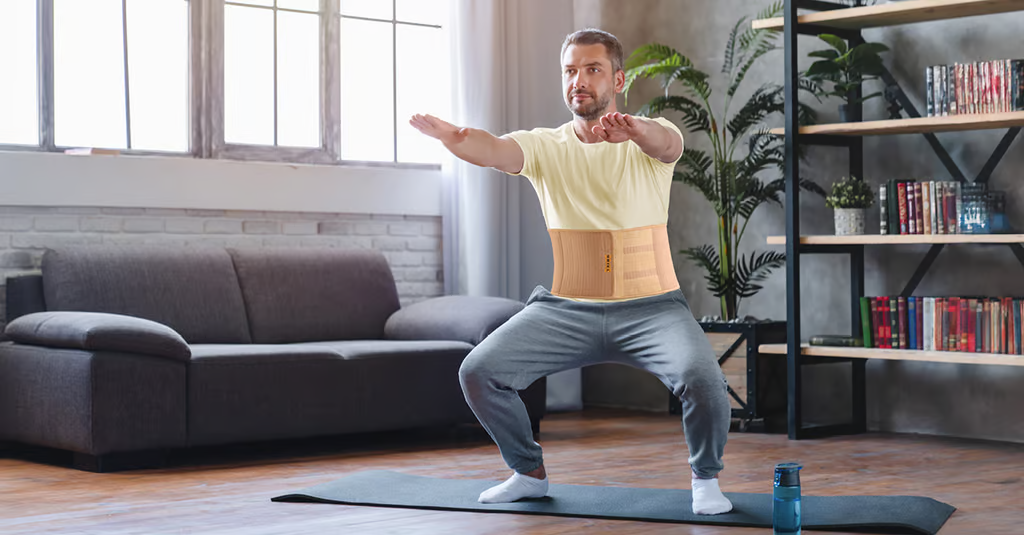
Treating Lower Back Pain: 6 Tips to Improve Quality of Life
Suffering from lower back pain? You are definitely not alone. There are many ways to deal with one of the most common pains in the world, here are some of them. It's time to relieve the pain.
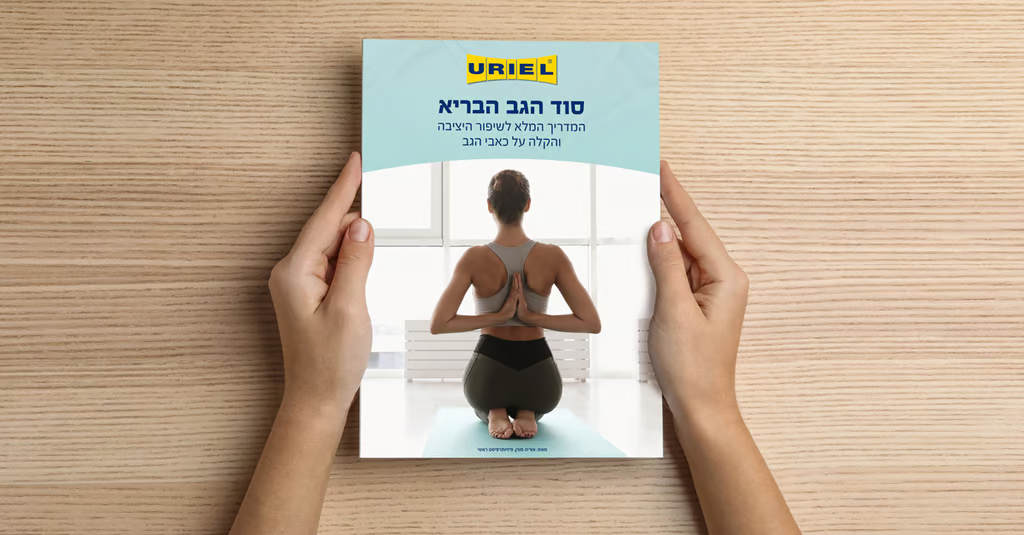
The Secret to a Healthy Back: The Complete Guide to Improving Posture and Alleviating Back Pain
Is back health important to you? Get the 'Secret of a Healthy Back' guide containing information, tips and useful advice for relieving back pain. By Oriya Moran, Chief Physiotherapist Download t...
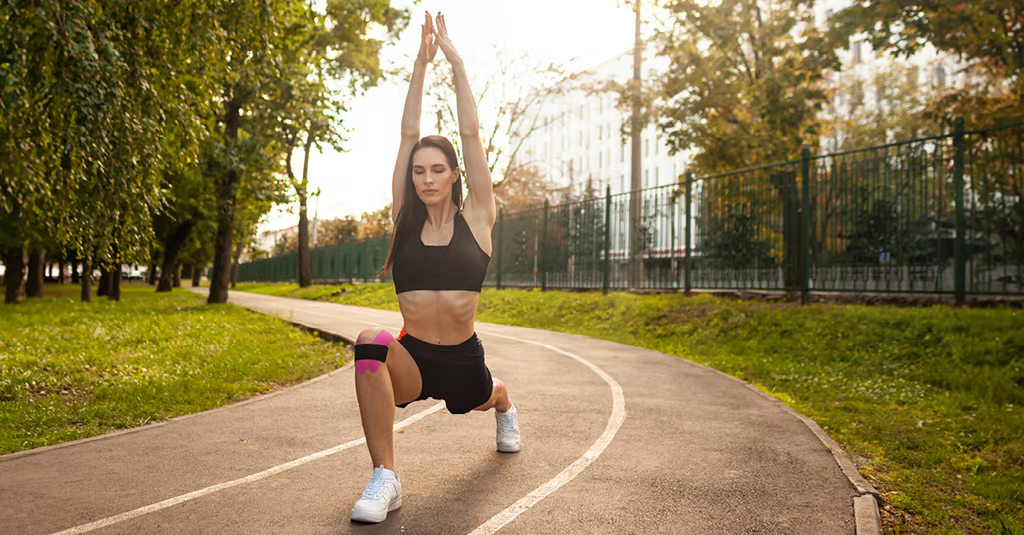
Kinesio tape or professional elastic bandage?
Suffering from sports injuries, bruises or simply pain caused by medical problems? Get to know the variety of dressing products that will support you. When should we use kinesiology tape and why d...
